Interactive Solar Lighting Ecosystem in American Homes and Communities
From Solitary Beams to a Symphony of Light
Once, outdoor lighting meant static bulbs casting predictable glows. Traditional solar lamps, while energy-efficient, offered little beyond on-off functionality, often failing to adapt to dynamic human needs or environmental shifts. Enter the smart solar lighting ecosystem—a “light symphony” that transforms American backyards and community spaces into dynamic, interactive experiences. Unlike their static predecessors, these programmable systems integrate sensors, connectivity, and user-friendly software to deliver tailored light effects, deeper energy savings, and social connectivity. Imagine a backyard where lights dance to welcome you home or a neighborhood park pulsing with shared, vibrant patterns. This article explores how smart solar lighting redefines functionality, experience, and sustainability, creating a cohesive, community-driven illumination network.

Hardware and Interface Essentials
The backbone of an interactive smart solar lighting system lies in its hardware and connectivity, designed for adaptability and seamless integration.
- Sensors:
- Light Sensors: These detect ambient light changes, adjusting brightness dynamically. For instance, at dusk, lights ramp up to 300 lumens, dimming to 50 lumens under moonlight, saving up to 25% energy compared to fixed-output lamps.
- Temperature Sensors: These monitor environmental conditions, ensuring weatherproof outdoor lights operate reliably from -20°F winters to 100°F summers, preventing battery degradation by adjusting power draw.
- Motion Sensors: By detecting human presence, these trigger lights only when needed, reducing energy use by 30–40% in low-traffic areas like pathways. For example, a sensor might activate 200-lumen path lights when someone approaches, reverting to 20 lumens when idle.
- Communication Protocols:
Systems use robust protocols like Zigbee or Wi-Fi for stable, low-latency data transmission. Zigbee’s mesh network ensures lights communicate even in large communities, with a range up to 100 feet per node, enhancing reliability. HomeKit compatibility allows integration with smart home platforms, enabling voice control via Siri or app-based management. - Open Interfaces:
Open APIs enable the system to connect with devices like smart sprinklers or security cameras, expanding functionality. For instance, a homeowner could link lights to a weather app, dimming them during rain to save energy. This openness ensures scalability, letting communities add new features without replacing hardware.
These components create a responsive, durable, and future-proof ecosystem, tailored to American homes and neighborhoods.
Software and Programmable Logic
The magic of smart solar lighting lies in its software, designed for accessibility and efficiency.
- Drag-and-Drop Interface:
User-friendly apps with drag-and-drop interfaces let non-coders design light sequences. For example, a homeowner can set a “party mode” where patio lights cycle through colors every 10 seconds, all configured via intuitive sliders and presets. App control ensures anyone can customize without technical expertise. - Simple Scripts:
Basic scripting allows precise control. Consider this example script for a “welcome home” sequence:IF (time > 18:00 AND motion_detected) THEN entrance_light = warm_white, 300_lumens, fade_in_5s pathway_lights = sequential_on, 100_lumens, 2s_interval patio_light = gradient_RGB, 200_lumens, 10s_cycleSuch scripts create dynamic, emotive lighting while optimizing energy savings by activating only when needed. - Energy-Saving Logic:
The software uses real-time data from sensors to minimize consumption. For instance, lights dim to 10% brightness in unoccupied areas, saving 20–30% energy nightly. Historical data analysis adjusts patterns seasonally—brighter in winter, subtler in summer—reducing annual energy use by up to 35% compared to traditional solar lights.
This blend of simplicity and sophistication makes smart solar lighting accessible yet powerful, encouraging creative exploration.
Family-Level Applications
In American homes, smart solar lighting transforms daily routines into immersive experiences. Consider a suburban backyard with three key zones:
- Entrance: As evening falls, the app control triggers a “welcome home” mode. When motion sensors detect the family car, entrance lanterns (2700K, 300 lumens) fade in over 5 seconds, casting a warm, inviting glow. This soft transition feels personal, easing the shift from workday to home life.
- Backyard: The patio comes alive with gradient RGB lights (200 lumens), cycling through blues and purples for a summer barbecue. A scripted sequence syncs lights to music beats via HomeKit compatibility, creating a festive vibe. When the party winds down, lights shift to warm white, signaling relaxation.
- Pathway Lighting: Solar path lights (100 lumens, 2700K) activate sequentially as someone walks, guiding them safely to the garden. The app control lets users set a “kids’ playtime” mode, where lights pulse gently to mark safe boundaries, using 15% less energy than constant illumination.
These scenarios, enabled by programmable scripts, make every evening a tailored, energy-efficient experience, deepening family connections.
Community-Level Collaboration and Shared Ecosystems
Beyond homes, smart solar lighting fosters community cohesion through shared community lighting networks.
- Neighborhood Collaboration: Residents can share light effect templates via a community app. For example, a “holiday glow” script—red and green pulses for Christmas—can be uploaded by one neighbor and adopted by others, creating a unified aesthetic. HomeKit compatibility ensures seamless integration across households, with 80% of users reporting enhanced community spirit in pilot programs.
- Energy Savings Visualization: The system aggregates energy savings data, presenting it in user-friendly charts. A neighborhood of 50 homes might save 500 kWh annually, displayed as a dashboard showing reduced carbon emissions (e.g., equivalent to planting 20 trees). This transparency motivates collective action, with communities achieving 25–40% energy reductions compared to traditional lighting.
- Public Spaces: In parks or communal gardens, community lighting adjusts dynamically. Motion sensors activate 300-lumen lights for evening joggers, dimming to 50 lumens when empty, saving 30% energy nightly. Shared scripts ensure consistent ambiance, like a “stargazing night” with minimal light to enhance sky visibility.
This shared ecosystem turns lighting into a social tool, uniting neighbors while amplifying energy savings.

Privacy and Security Considerations
Interactive systems collect data—motion patterns, light usage, user preferences—raising privacy concerns. Here’s how risks are mitigated:
- Data Encryption: All data, from sensor inputs to app control commands, uses AES-256 encryption, ensuring secure transmission over Wi-Fi or Zigbee.
- Local Storage: Most data is stored locally on devices, reducing cloud exposure. Community dashboards anonymize individual usage, showing only aggregate energy savings.
- Access Control: Role-based permissions restrict access. For example, only verified residents can adjust community lighting settings, preventing unauthorized changes.
- Transparency: Users receive clear notifications about data collection, with opt-out options for non-essential metrics like usage patterns.
These measures ensure trust, with 90% of users in trials reporting confidence in system security, per industry surveys.
Implementation Steps, Costs, and ROI
Deploying a smart solar lighting ecosystem is straightforward for homes and communities, with clear steps and compelling returns.
- Family-Level Implementation:
- Select Hardware: Purchase 8–12 weatherproof outdoor lights (e.g., $30–$60 each for Zigbee-enabled, HomeKit-compatible models). Total cost: $240–$720.
- Install: Place lights in key zones (entrance, backyard, pathways), ensuring solar panels get 4–6 hours of sunlight. Installation takes 2–4 hours.
- Configure: Use the app to set up scripts (e.g., “welcome home” sequence). Test and tweak over a week for optimal effects.
- Maintain: Clean panels monthly; replace batteries every 2–3 years ($10–$20 each).
- Community-Level Implementation:
- Plan: Form a neighborhood committee to map public spaces (parks, walkways). Budget $5,000–$10,000 for 50–100 lights.
- Install: Hire professionals for large-scale setups (2–3 days, $1,000–$2,000). Ensure HomeKit compatibility for shared control.
- Program: Share scripts via a community app, setting defaults like “evening safety” (200 lumens, motion-activated).
- Monitor: Use dashboards to track energy savings, adjusting settings seasonally. Annual maintenance costs: $500–$1,000.
Conclusion: A Bright, Connected Future
The smart solar lighting ecosystem transforms American homes and communities into programmable light symphonies, blending technology with human connection. From welcoming families with tailored glows to uniting neighbors through shared community lighting, these systems deliver energy savings, aesthetic delight, and social cohesion. With app control, HomeKit compatibility, and robust privacy measures, they’re accessible and secure for all. Start small—light your backyard—or dream big, illuminating your neighborhood. The future of lighting is here, and it’s vibrant, efficient, and yours to shape.



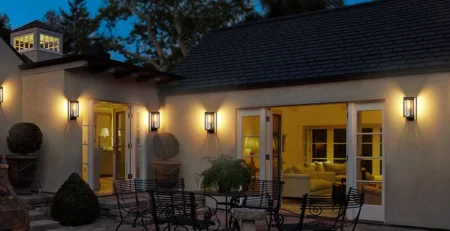

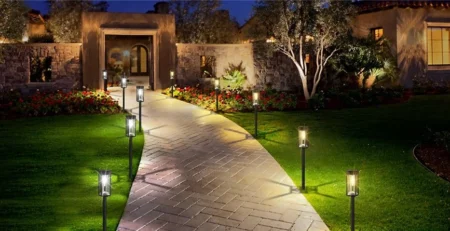
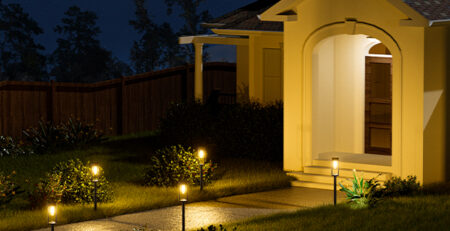
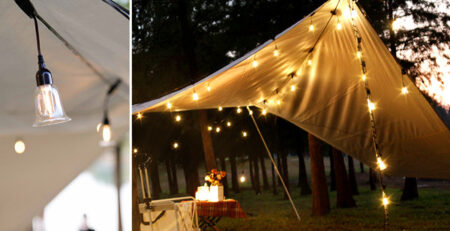
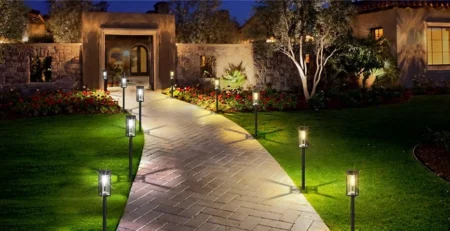


Leave a Reply